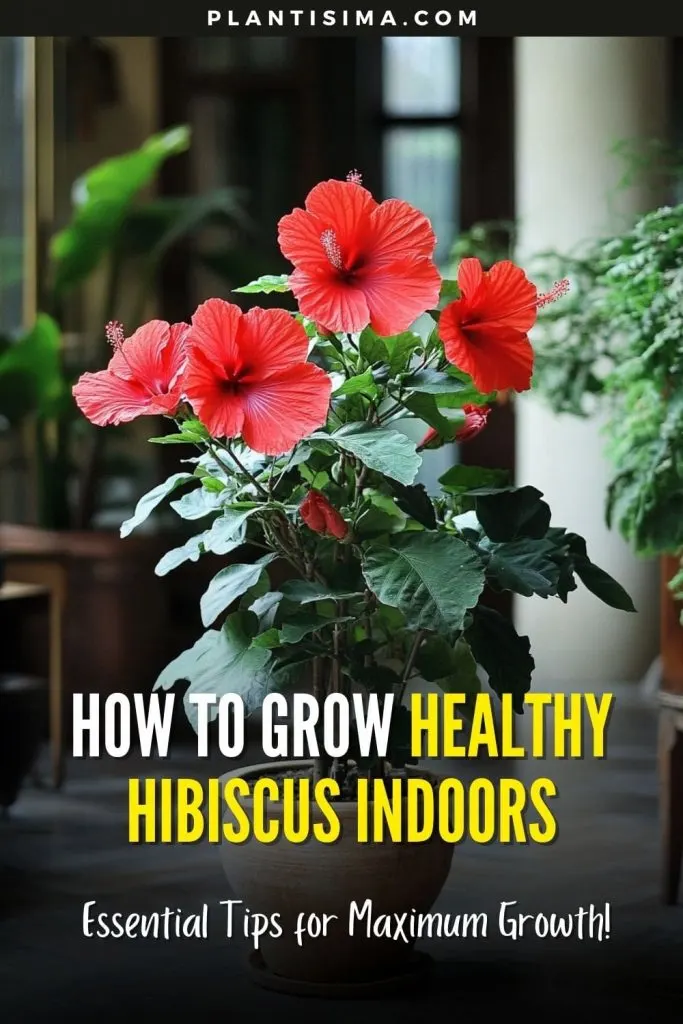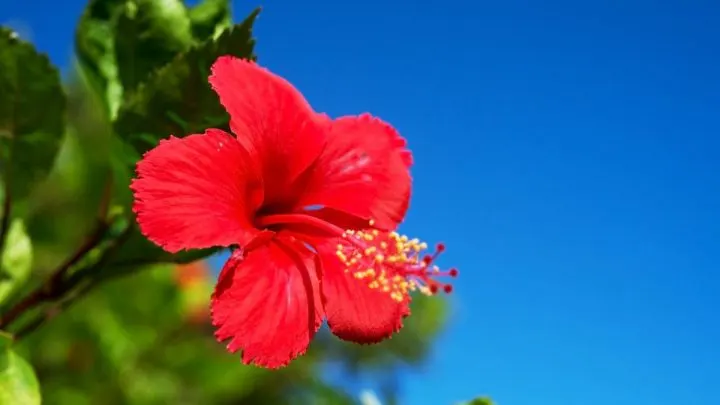In today’s article, we will talk about the hibiscus indoor plant care guide. This tropical plant is not a demanding plant to plant and grow. When you get it you will be glad you made that decision.
The various colors and flowers of this plant will give you pleasure. Its wonderful smell that attracts bees will settle in your nostrils and you will be intoxicated by their appearance.
There are several simple steps you need to master when it comes to caring for this plant. Today we will learn each of these steps separately and in detail.
When the hibiscus arrives in your home, you will be 100% ready to take care of it properly. If you already have it, more knowledge about this plant can’t hurt, can it?
Let’s learn all about the hibiscus indoor plant care guide.
About Hibiscus Plant (Features And Habitat)
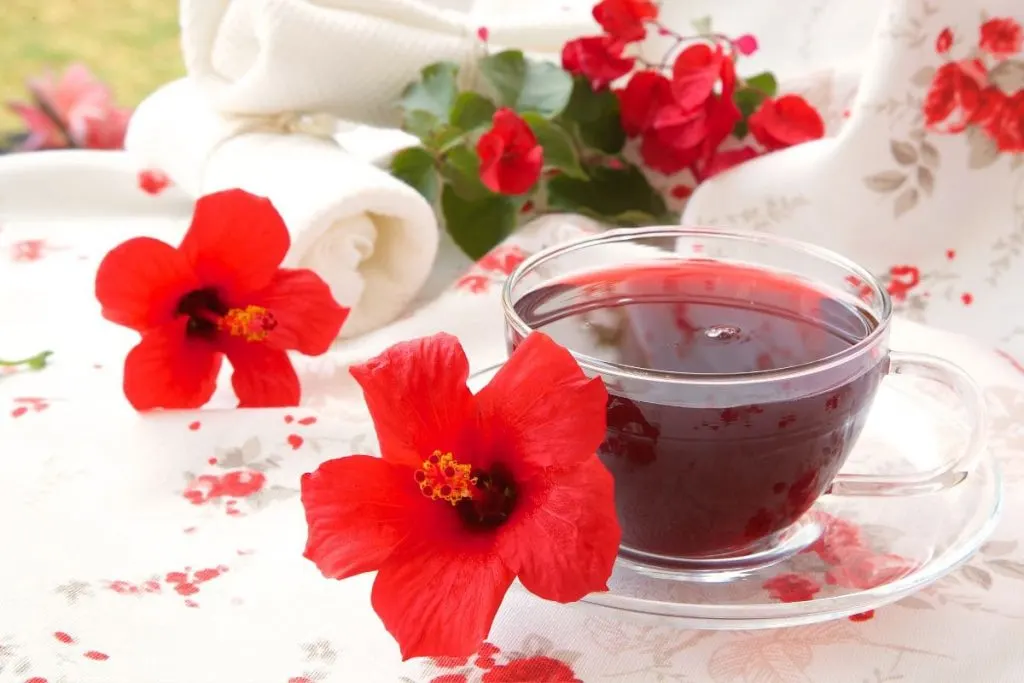
Hibiscus is a plant from a genus of plants that includes more than 400 species of shrubs and herbaceous plants. The plant got its Latin name from the word hibiscus, which means medicinal agent, and in our regions, it has several names, such as Chinese Mallow or Syrian rose.
Hibiscus can be an evergreen or deciduous perennial, usually in the form of a bush. The main stem is upright and becomes woody over time, as well as the branches that are specifically upright. The leaves are dark green in color, usually with a three-pointed pattern and jagged edges. The shoots are initially hairy, and later become smooth.
The flowers are in various colors, from white, pink, beige, and purple to bright red, and in some, the colors of the flowers change with age. Most often, they are two-colored, and their center is emphasized. It blooms from June to September, and the fruit is a capsule with several seeds in each lobe.
Hibiscus originates from Asia, but today it is one of the most widespread plants in the world, which today exists on almost every continent. In colder areas, it is grown as a houseplant, although some species have adapted to outdoor cultivation.
Hibiscus Indoors – Care Guide Of Hibiscus Tropical Plants
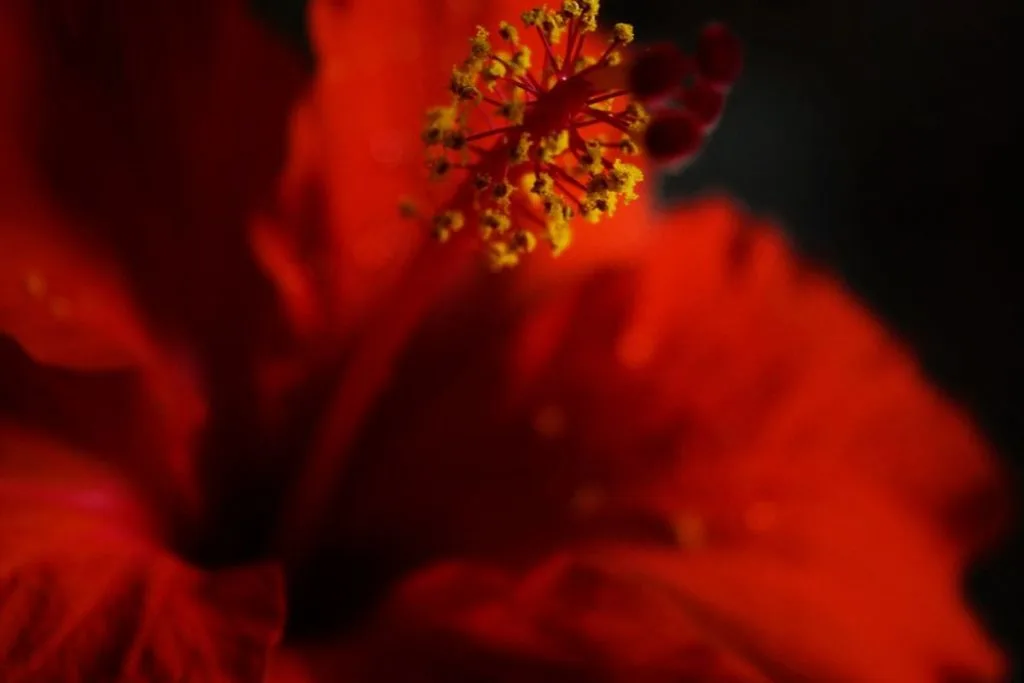
The Hibiscus plant is one of those plants that a beginner can buy and grow in their home or garden.
This lovely plant with many color varieties will bloom happily in your home once you learn its easy and unique routine for growing. All you need is some goodwill and our care guide article.
There is nothing hard or stressful about its care, so, let’s learn more about the care guide for hibiscus plants.
Light Conditions When Growing Hibiscus Indoors
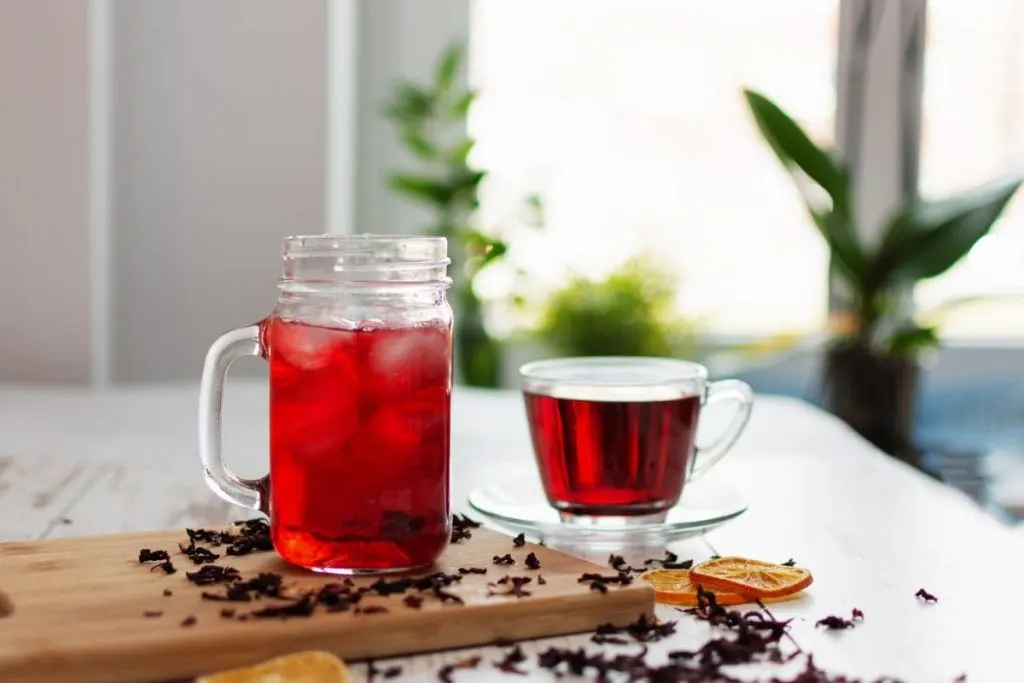
When it comes to the light that hibiscus needs, we will say that it is important that it has some sun with partial shade.
Bright indirect light is also a good option for hibiscus plants. Direct sun can kill your plant, and if you only have one free space for this plant, then filter that light or make space in another window in your home with hibiscus.
It is a tropical plant, but it is not resistant to several hours of direct sunlight. This can cause a lot of damage to your plant. Drying the leaves, curling the leaves, etc. Artificial light hibiscus is also not a very good option for these delicate leaves and flowers.
Early summer morning sun and winter sun can’t harm it as much as afternoon summer sunlight, but you should still be careful. Hibiscus blooms better when it is exposed to bright light.
Indoor Hibiscus Watering Needs
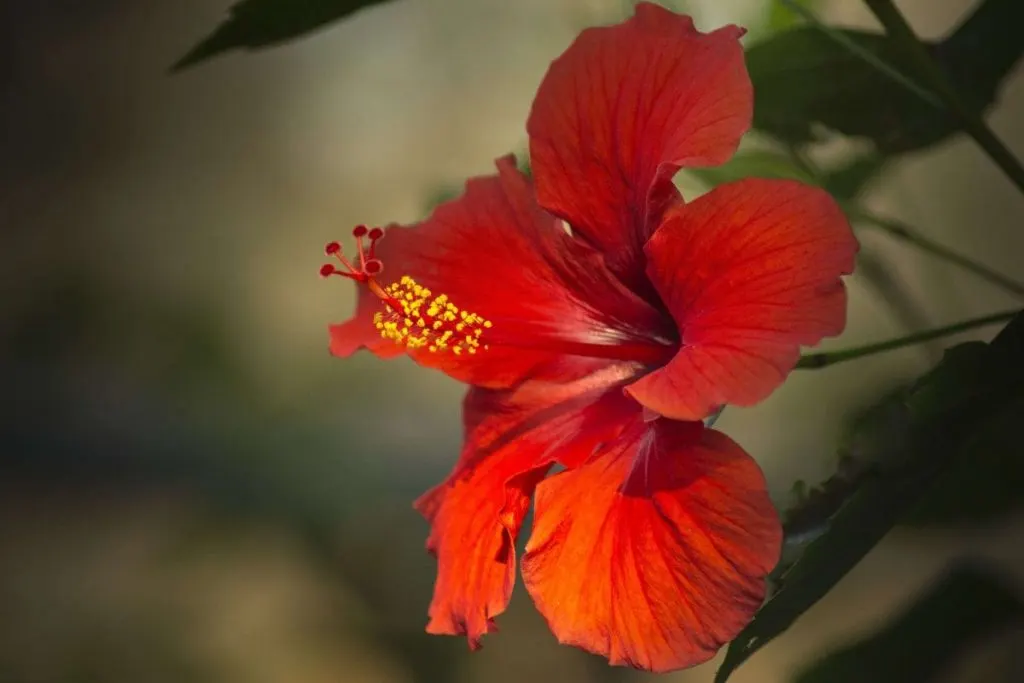
What the hibiscus plant hates the most is soggy soil. It can do so much harm to your plant! You should water it on a weekly basis but always make sure that your soil isn’t still watered after the last watering session.
Tap water isn’t what this plant needs. Chlorine from the tap water isn’t recommendable for this gentle plant so it’s better if you use boiled water, distilled water, or even rainwater.
Too much water causes the shriveling of leaves, falling leaves, bending of leaves, etc. Too much water usually reflects on the health of plants’ leaves so you’ll notice this problem if it appears right away. Just because of this issue, you should make drainage holes in your pot.
When a plant has a problem, it always tells you right away, so don’t worry, you’ll know. Its showy flowers will bloom once you satisfied all the needed conditions in the right way.
Soil Type For Hibiscus Flowers
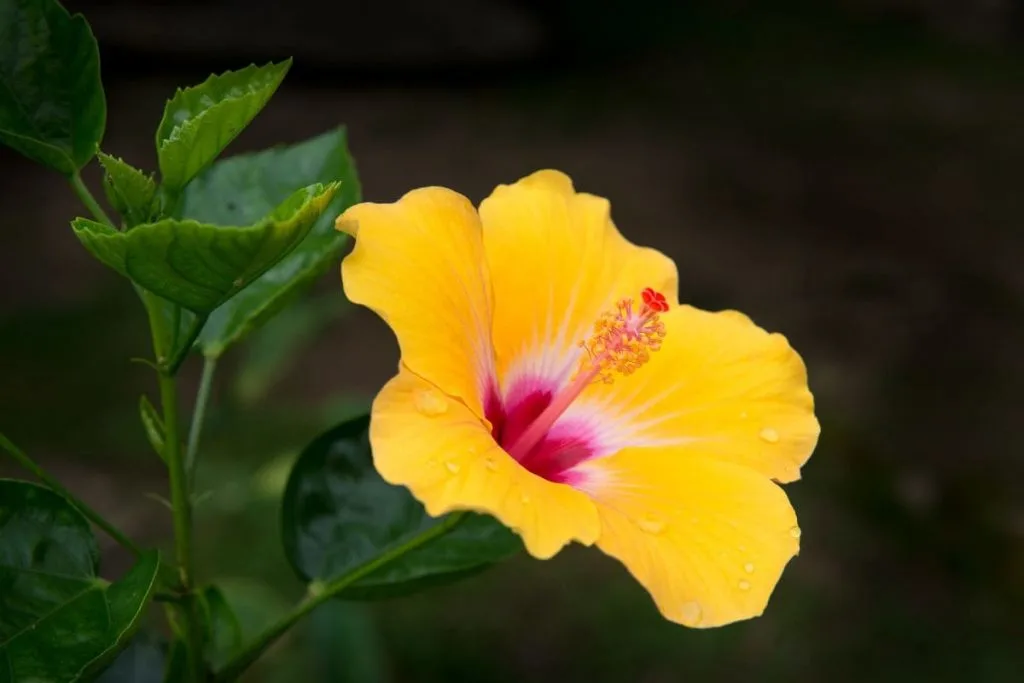
When it comes to the soil, as we already said above, well-drained potting soil is a good option, but it is not a permanent condition of the soil for this plant.
When it comes to the type of soil that hibiscus likes, hibiscus is best suited to amended with organic matter. Peat moss is also not a bad choice for hibiscus. Unlike other houseplants, although very sensitive and delicate, hibiscus likes acidic soil, so pay attention to that as well.
If you want to know which soil to avoid, avoid perlite soil and sand for this plant. It doesn’t have the necessary nutrients for your plant.
Temperature And Humidity Needs For Hibiscus Flower
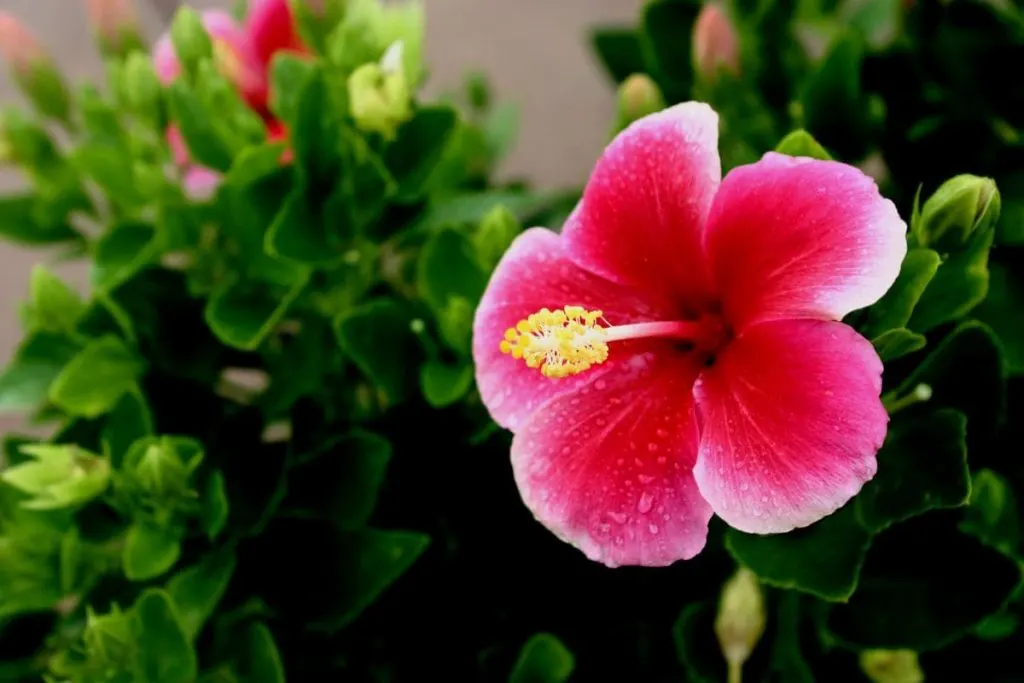
Temperate climates suit this plant for growing hibiscus plants outdoors as well, but since we’re talking about indoor hibiscus today, conditions are not the same.
The best temperature range for hibiscus is 65° to 75°F is best. If exposed to a cooler room, the lowest temperature the plant can tolerate is 55 F. Cold climates are not for this plant.
Its native habitat has a great influence on its humidity requirements, so this plant likes medium to high humidity levels. The most suitable locations for the plant are the bathroom, and if you intend to buy an air humidifier, then other rooms can of course.
Read more about: Bathroom plants that absorb moisture.
Fertilizer For Hibiscus Indoor Plant
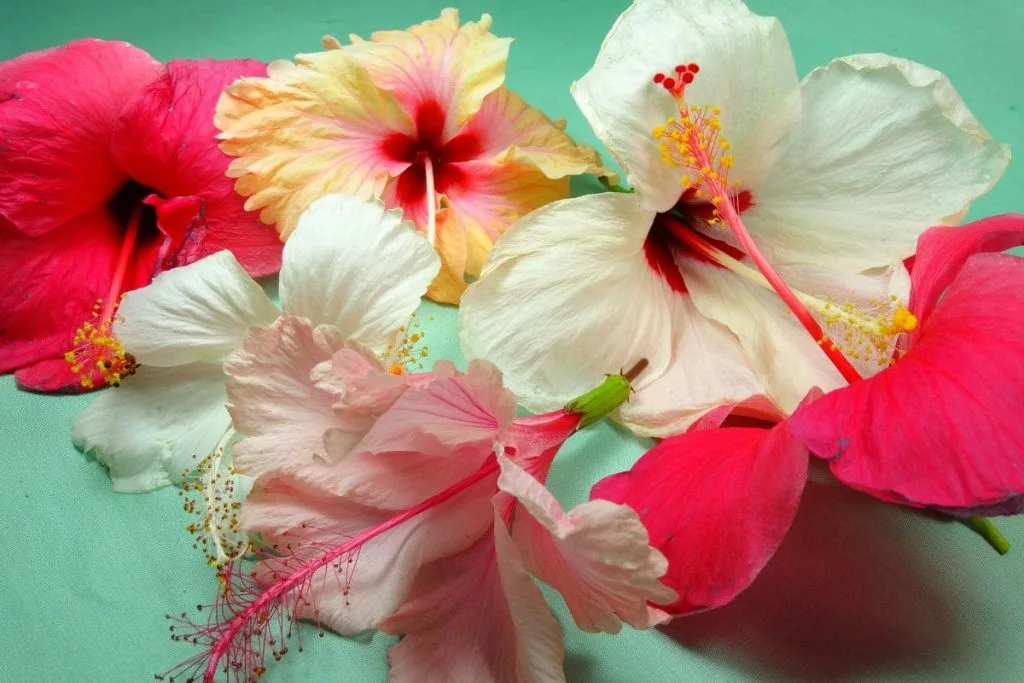
The best fertilizer for hibiscus indoors is a fertilizer with an analysis like 10-10-10. This fertilizer will give and provide your plants with all the needed nutrients and you’ll be able to tell a difference between using this fertilizer and your hibiscus plant before.
Avoid nitrogen-based fertilizer and fluid fertilizers for hibiscus. When it’s a plant growing season, you can fertilize it once a week.
Pruning Hibiscus Plants
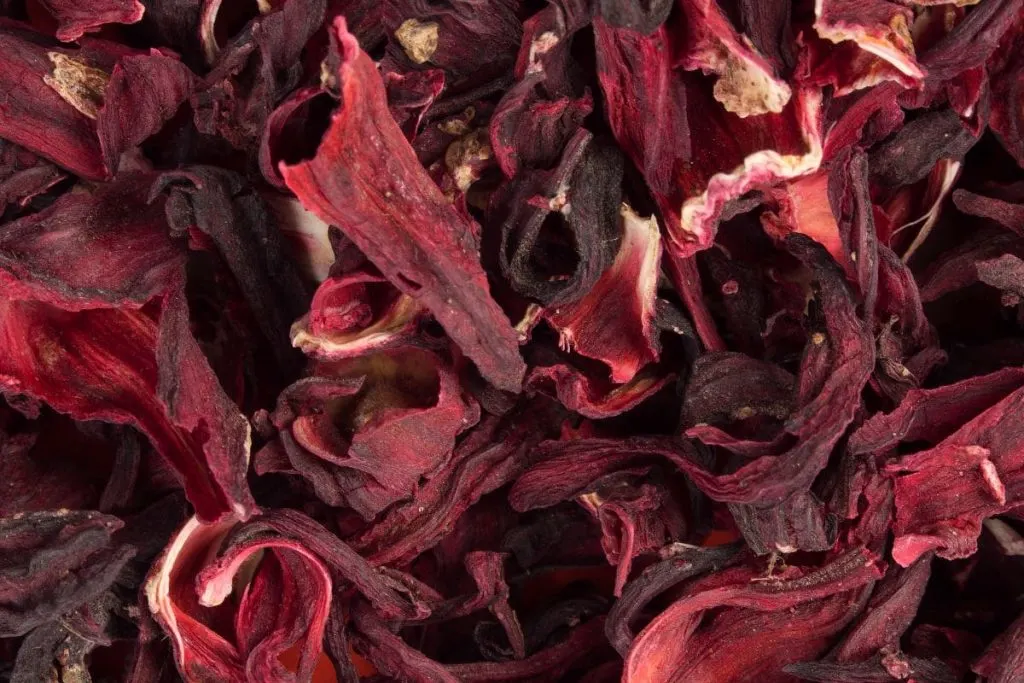
When pruning the hibiscus plant, you can do it by soft stem cuttings or just by removing the flower buds. Both ways are very effective and they’ll make a difference for your plant.
This is usually done when a plant has finished its flowering season and you want to encourage your plant to keep going with its healthy growth. After pruning is done, you can place your hibiscus plant for a while in a sunny window in your home.
I suggest a south-facing window, the sun isn’t too strong there and it will be perfect. Hibiscus care definitely needs pruning time as well, so make sure you do this every late spring or early summer period.
Propagation Of Hibiscus Plants
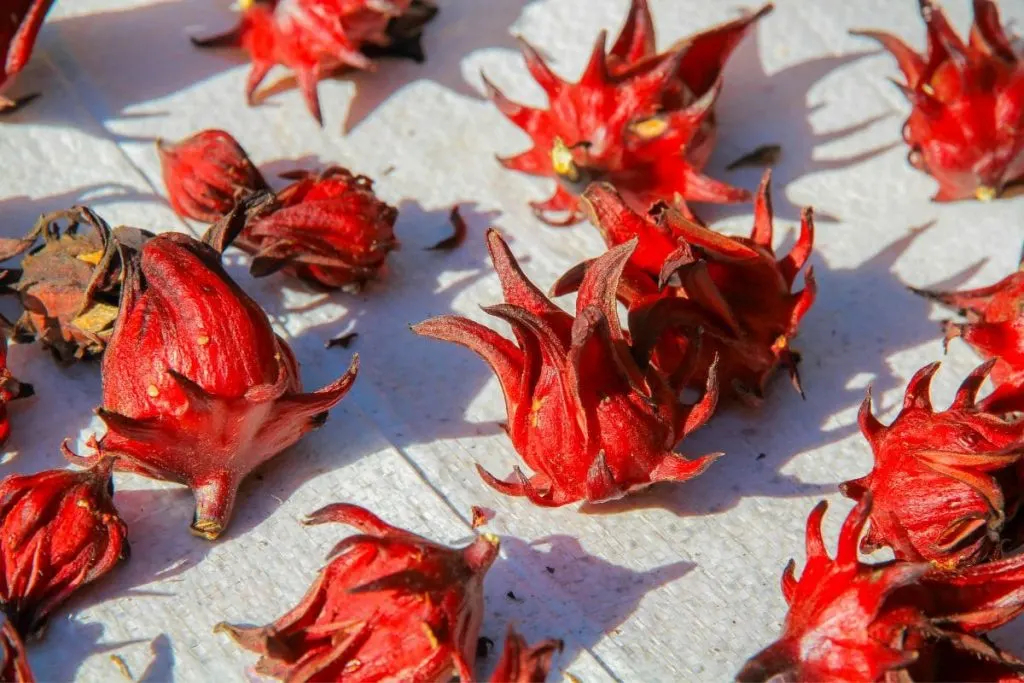
Propagation of the hibiscus plant is a fun process. It is also very easy and it can be done by a beginner. If this is your first time propagating this plant, don’t worry.
It can be done in two ways: by stem cuttings and from seeds. both ways are super easy and we’ll tell you about them below. Let’s find out more about hibiscus propagation.
Propagation Of Hibiscus From Seeds
Propagation of a hibiscus plant from seed is a common method of propagation, given that this plant produces a lot of seeds. This process is done like this:
- The seeds are collected during September when they ripen in their seed pods.
- After that, take it out of the cocoon and keep it in a dry and cool place.
- The seeds can be stratified before sowing, but generally have a high germination rate.
- Make sure you dispose of the seeds equally so they don’t touch during their growth process.
- Put the seeds in loose soil and cover them with a thin layer of soil and keep the soil moist (not too long).
- Most often, it germinates after 14 days after loosening.
Propagation Of Hibiscus Plant From Stem Cuttings
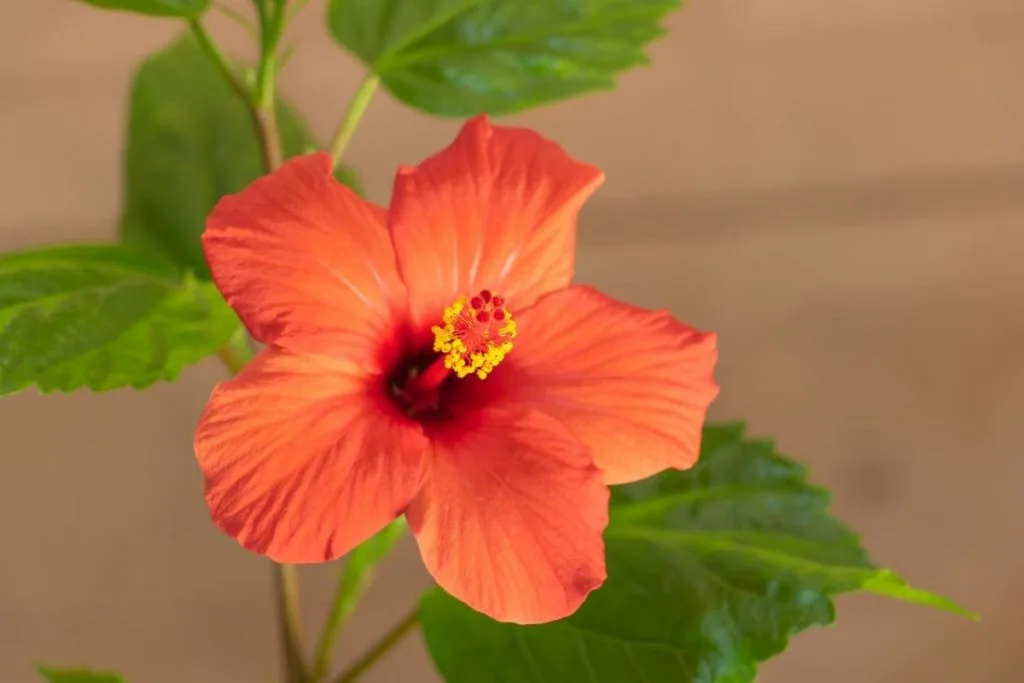
Propagation of hibiscus with stem cuttings is an even easier process than propagation by seeds. All you need is a sharp knife or scissors and a pair of gloves. You can perform this process like this:
- Cut the healthy stem of your hibiscus slowly, so as not to injure the plant, nor to leave uneven parts on the cut part of the plant.
- After that, place the cut part in the prepared soil, which should be the same as the one in which one hibiscus was already planted.
- During this propagation, it is preferable that it is fertilized a little, it will increase the chances of faster growth.
- Water that soil a little and wait. You should soon have signs of this plant growing and spreading.
Blooms Of Indoor Hibiscus
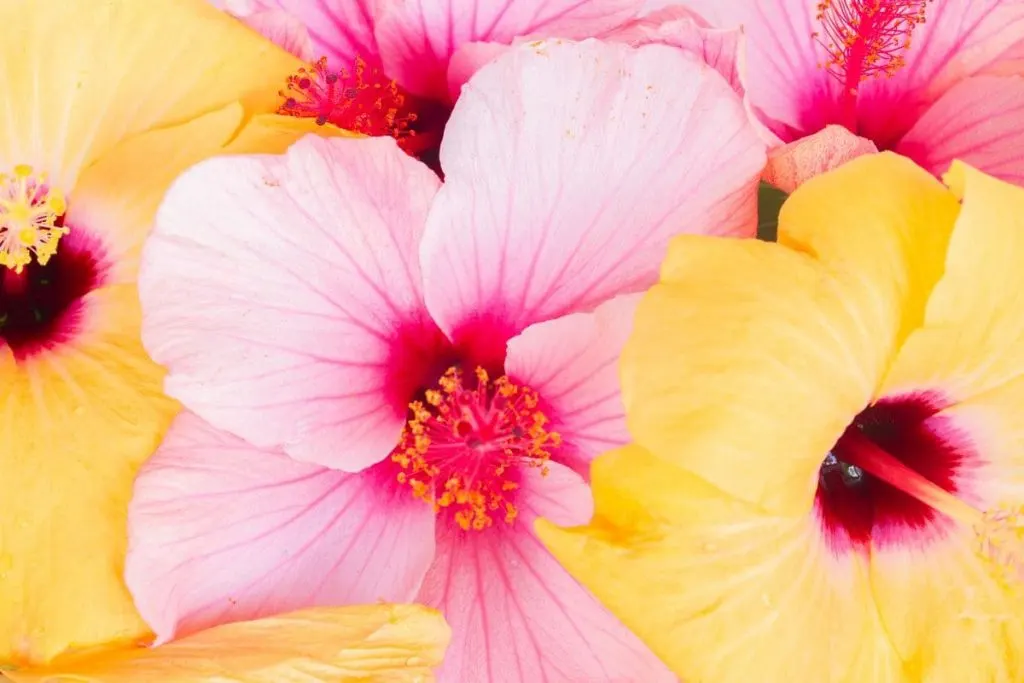
Hibiscus indoors blooms from mid-summer to late summer. This amazing plan will bloom in the most wonderful varieties of color.
It can give white, pink, red, lavender, or burgundy flowers. The unusual thing about its blooms is that it only blooms for a day.
These perfect flowers will be seeable for a day only, so enjoy them and make sure you take a photo.
Winter Months For Hibiscus Indoor Plant
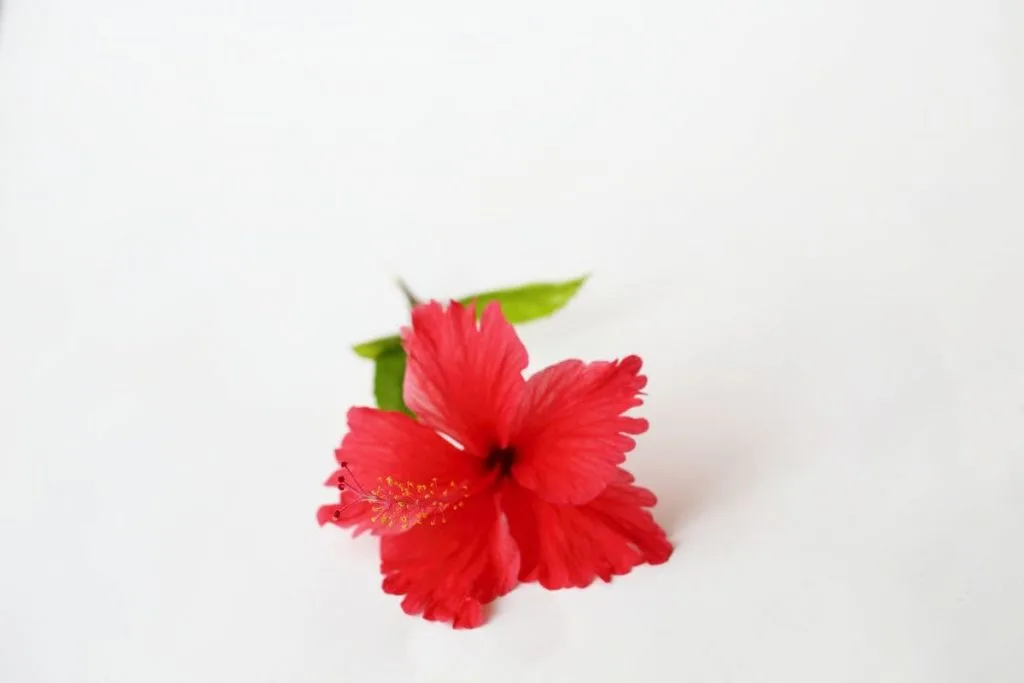
Hibiscus is an active plant throughout the year during flowering. The dormant phase begins already in early autumn when it loses its leaves and flowers completely and the fruit with seeds ripens.
During the late winter, the plant is bare and hibernates (sleep, rests) until spring. To protect the plant from the cold, cover it with agro textile or nylon to maintain warmth. This also protects the plant from frost. This applies to outdoor plants.
If you grow hibiscus indoors with heating in winter, increase the level of humidity in the air or moisten the leaves so that they do not fall off. Leaves fall off if the temperature drops below 50 F.
Better to keep it in a moister, cooler location away from heat sources during the winter. During the winter, it is necessary to reduce watering, and an excessive amount of water causes yellowing of the leaves.
Problems With Hibiscus Plants
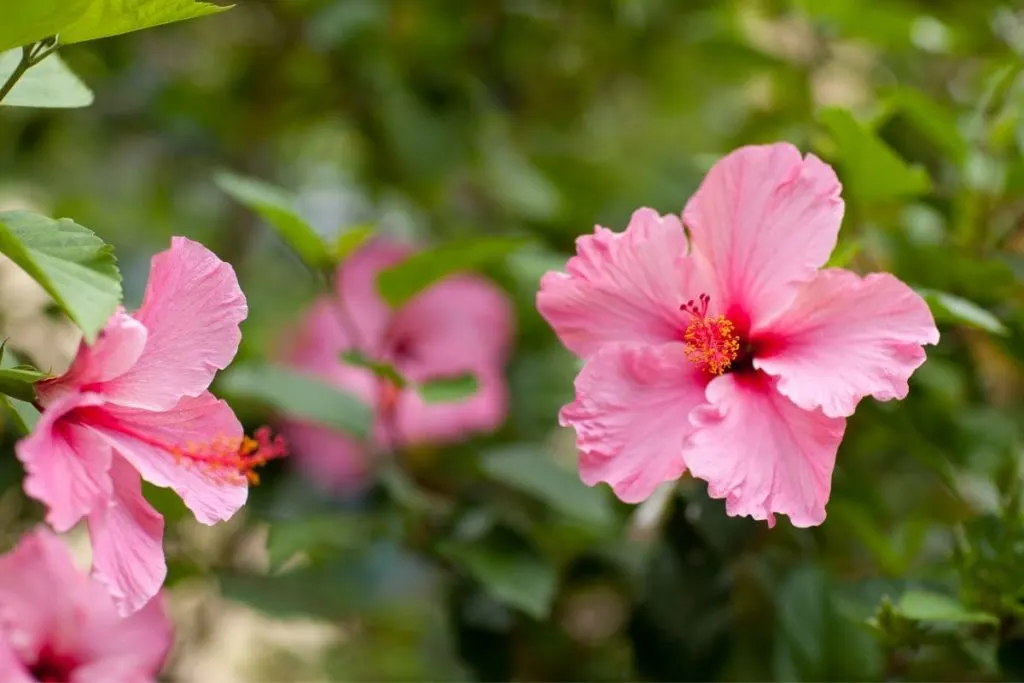
Even most wonderful plants and flowers have problems. They just appear, but they can go as fast as they’ve come, so don’t worry.
The most common problems that hibiscus indoors can face are red spider mites, root rot, bud drop, drooping leaves, etc.
Today, we’ll talk in detail about the first three most common issues. Let’s see what they are and why they show up on your plant.
Spider Mites Issue On Hibiscus Plants
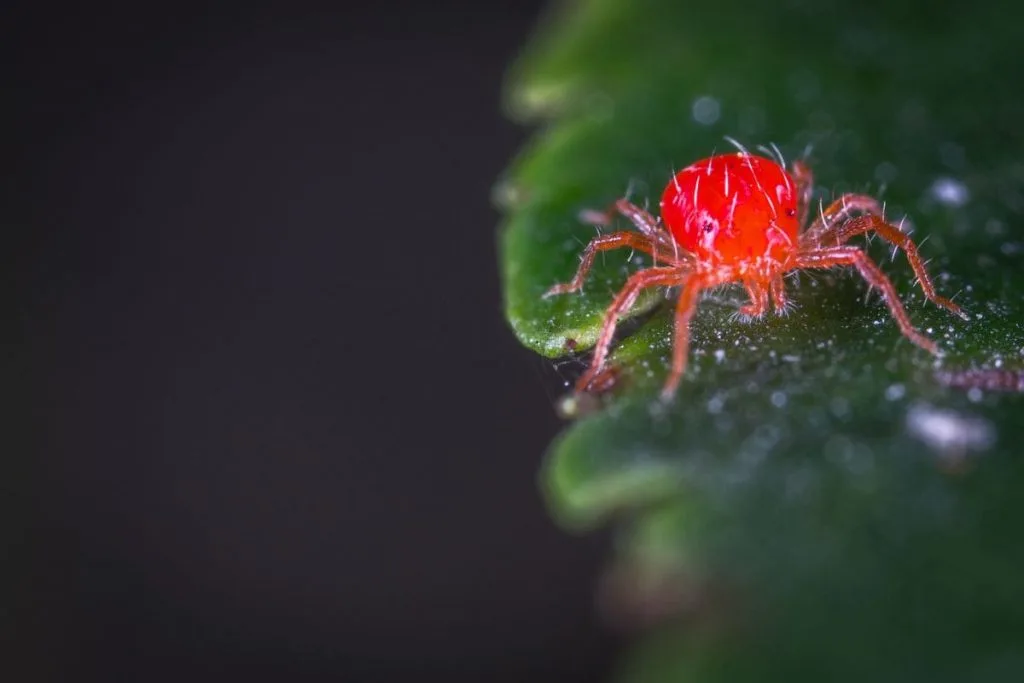
The red spider mite is a common pest that feeds on sap and reproduces on hibiscus leaves. It inhabits young leaves where food is easier to find, and in the interior of the plant, it weaves webs and develops larvae.
It is visible due to the tiny silky webs, and it can be solved by using insecticides, insecticidal soap, warm water, and a soft sponge. After this, bye-bye, no more pests.
Bud Drop Problem On Hibiscus Indoor Plant
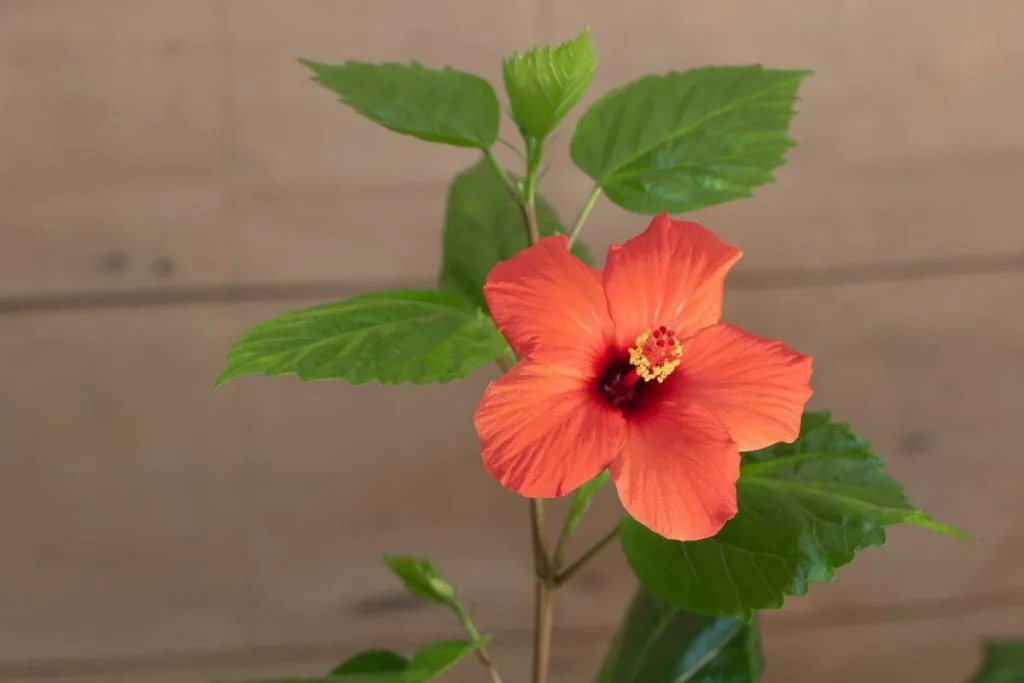
This happens when your plant is either too dry or too moist. It seems ironic, but it can happen in both of these situations.
The tropical plant doesn’t like much water and doesn’t like dry conditions as well, Finger check of the soil is what you need.
Be careful and pay attention to its watering routine to avoid bud drop problems. This problem occurs when your humidity levels are too low as well.
That is why you’ll need an air humidifier if you’re growing it in the leaving room where humidity is usually low.
Root Rot On Hibiscus Indoors
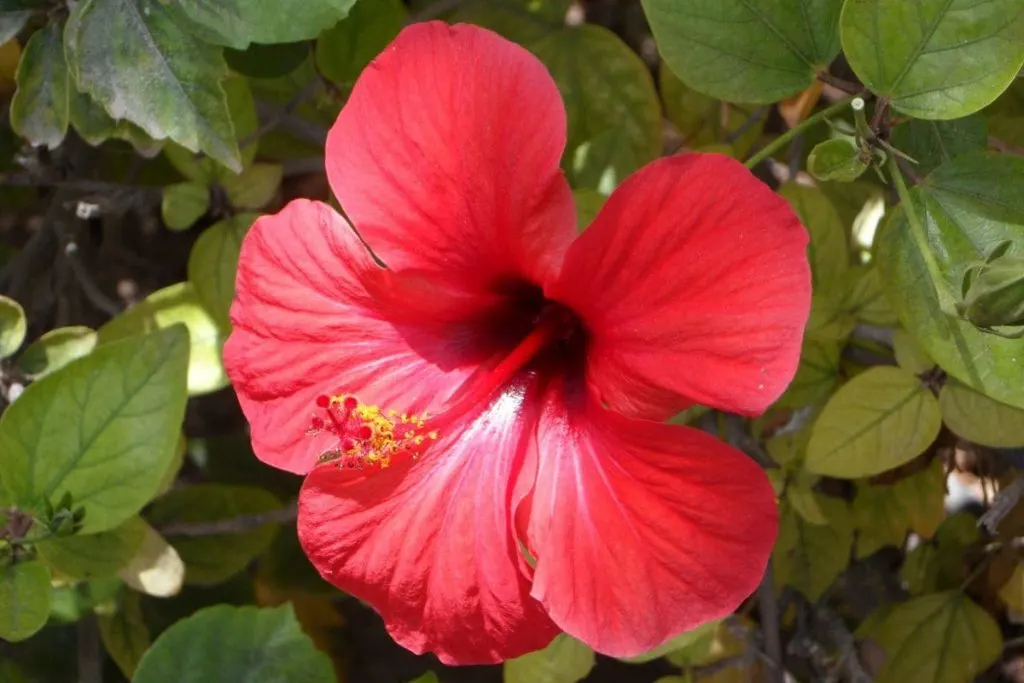
Rotting of the roots is caused by a huge amount of water that remains at the roots of the plant for a long time.
It is characteristic that the leaves fall off and the plant wilts, and when the plant is removed with its roots, it has a characteristic stench and looks shriveled.
Pulling out a plant with its roots is very easy once root rot has started and has taken over the entire root of the plant. The plant needs to be watered only when the soil is dry as we said above.
Hibiscus Varieties – 3 Most Popular Hibiscus Types
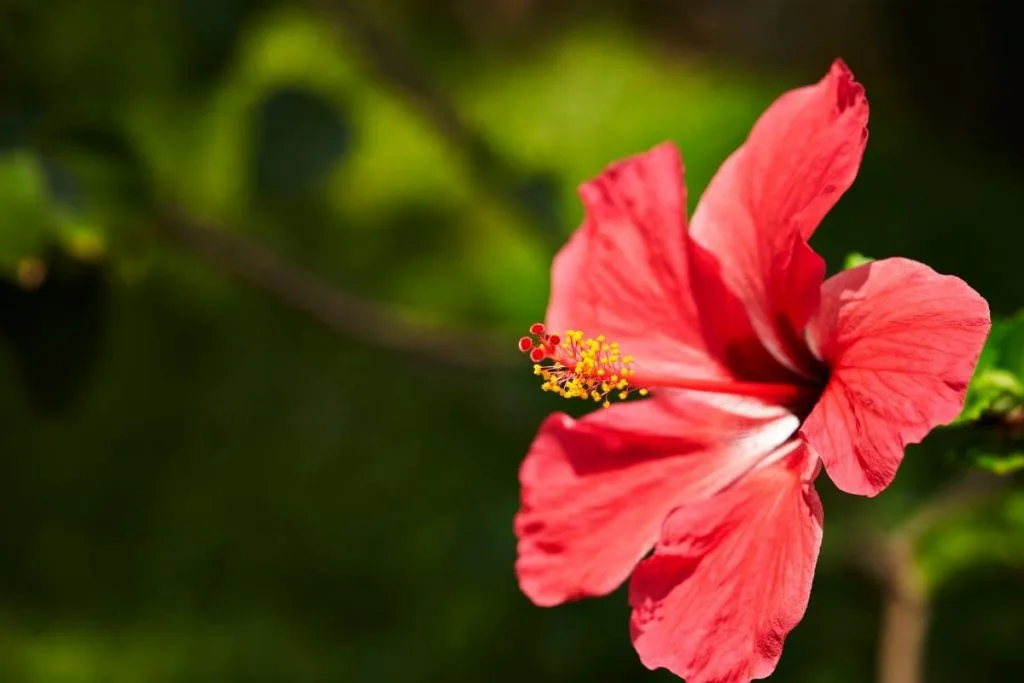
The care guide for hibiscus plants is almost 100% the same for all hibiscus plants. The only difference is if you’re growing them indoors or outdoors. But today, we’re talking about a care guide for indoor plants and we’ll mention its most famous 3 varieties.
- Hibiscus Rosa Sinensis
Tropical hibiscus is also called a Chinese rose. It comes from Asia and is characterized by its red flowers.
It is evergreen and grows in a warm and open place during the summer, but it needs to be stored indoors during the winter. Its flowers are boiled and eaten as a side dish or dried and candied as a delicacy.
- Hibiscus moscheutos
Swamp hibiscus is a deciduous perennial that loses its aerial part during the winter but regenerates again in the spring.
It has large flowers, the size of a small plate, which looks impressive on a smaller plant. It can grow up to 6 feet and is a popular ornamental species in gardens.
- Hibiscus coccineus
The crimson hibiscus is a perennial similar to the marsh hibiscus in terms of the color of the flowers. It can grow up to 6 feet tall and is often grown as an ornamental perennial, outdoors or indoors.
The flowers are characterized by separated petals, and the leaf is five-pointed and resembles a cannabis leaf, although it is in no way related to that species.
FAQ – Hibiscus Indoor Plant
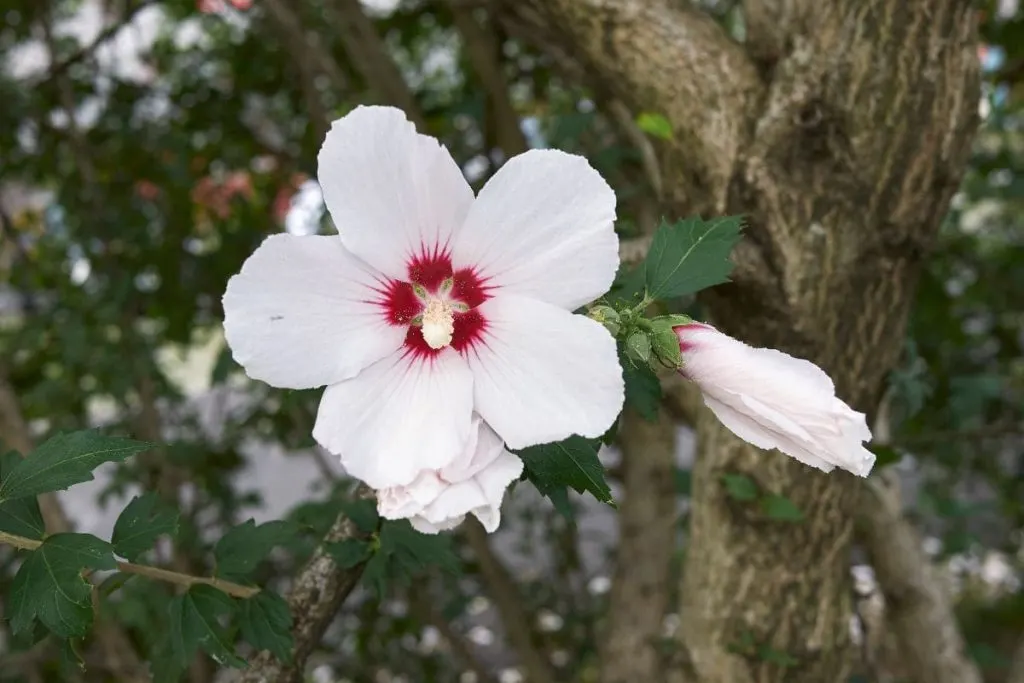
As always, to make sure we answered all your questions about a specific plant or a flower, we prepared a faq section. There are some unanswered questions hanging in the air about the hibiscus plant, so let’s answer them so we can definitely know all about hibiscus plants.
How Long Do Hibiscus Plants Live?
How Long Do Hibiscus Plants Live?
What Is A Symbolism Of Hibiscus Flower?
Hibiscus is a flower that has many symbols in different cultures. When someone is given a hibiscus as a gift, it is said to take advantage of every opportunity and day and to enjoy life.
The hibiscus is a symbol of Hawaii that is on the flag but is also given to guests as a sign of welcome. The Chinese associate it with wealth and fame, in Malaysia it is a national symbol, while in South Korea it is associated with immortality.
Do Hibiscus Flowers Come Back Every Year?
How To Keep The Hibiscus Flowers To Bloom Longer?
If you want wonderful blooms to last longer than one day, do this:
- Re-pot your hibiscus every two years, in January or February.
- Cut the plant in half in early spring.
- At the end of April, place the plant in a place where it gets full sun for at least 2 hours.
- Fertilize your hibiscus every two weeks.
Are Hibiscus Plants Toxic?
History Of Hibiscus Plant
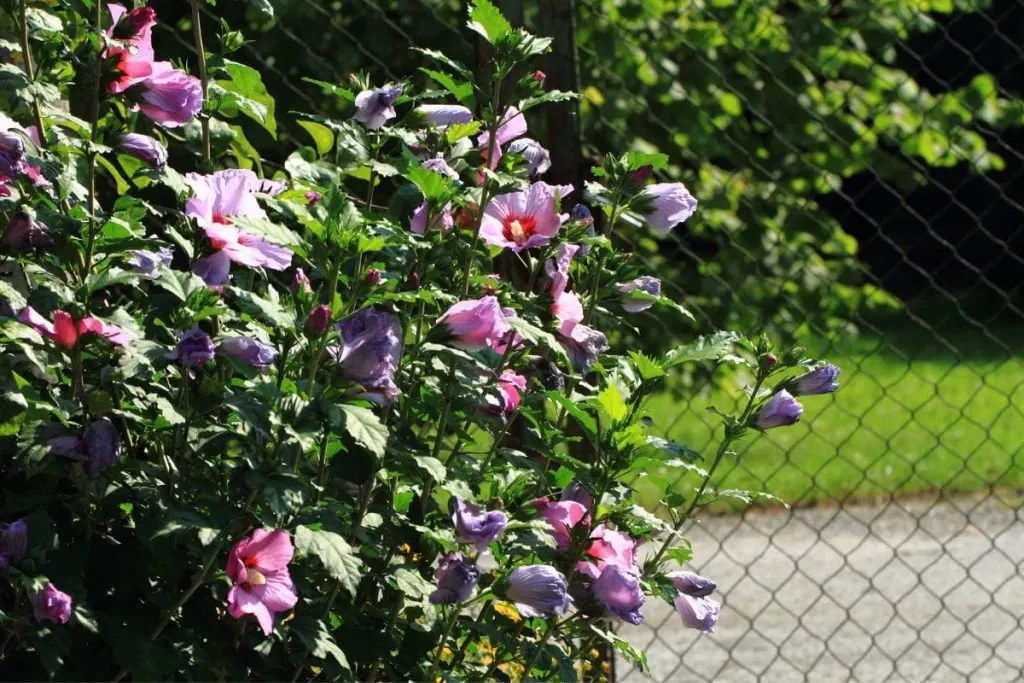
Hibiscus originates from Asia, and its medicinal properties are known to the peoples of China, Japan, and Cambodia.
It was most often consumed as cold tea, and with the colonization, it became popular in Egypt where it was a popular drink of the pharaohs.
Throughout history, it has also been used in cosmetics and was believed to rejuvenate the skin of the face. It came to Europe only in the 16th century and scientists called it the Syrian rose because they thought it came from Syria.
Today, the biggest producers are Sudan, China, Mexico, and Egypt, and in these countries, it is part of culture and gastronomy.
Final Thoughts On Hibiscus Indoor Plant
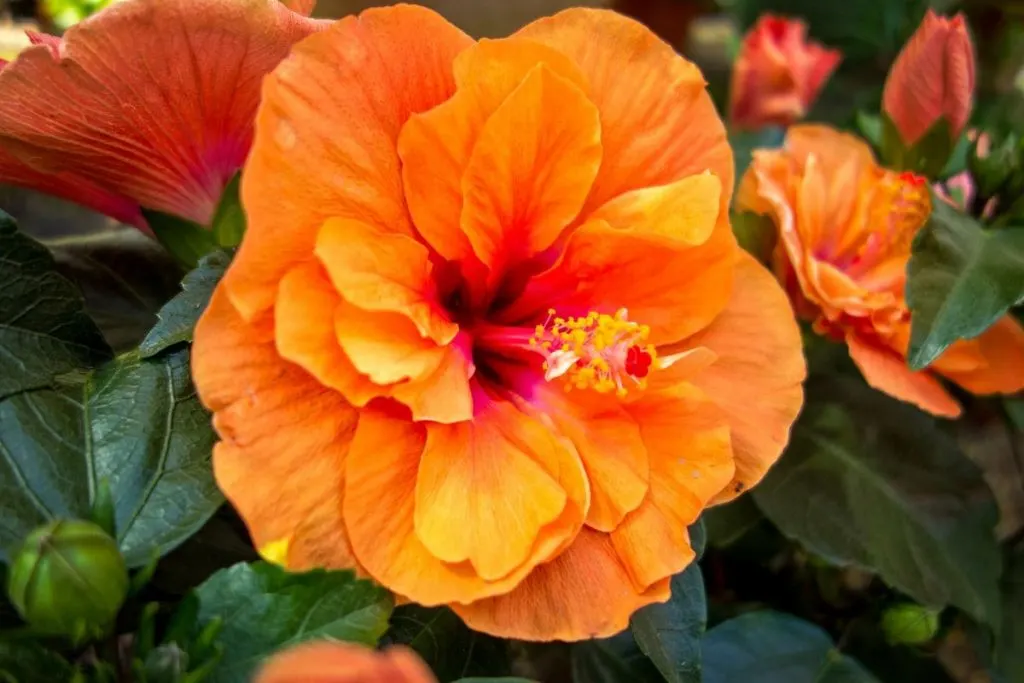
My dears, we have come to the end of another plant care guide, and today it was the hibiscus indoor plant.
This precise care guide has given you a detailed insight into the care of these flowers and may have decided whether you want to get one for your home.
If you skipped some parts, to resume it: blight indirect light, use soil amended with organic matter, and water it on a weekly basis once without but make sure you don’t overdo it.
If you already had it, I’m sure it helped in many things when it comes to caring for hibiscus flowers. We cannot always know everything and the rule always applies to plants, additional information can harm, right?
I hope you learned a lot from this article and enjoyed it. That would be all for today. See you tomorrow with new plants and new flowers.
